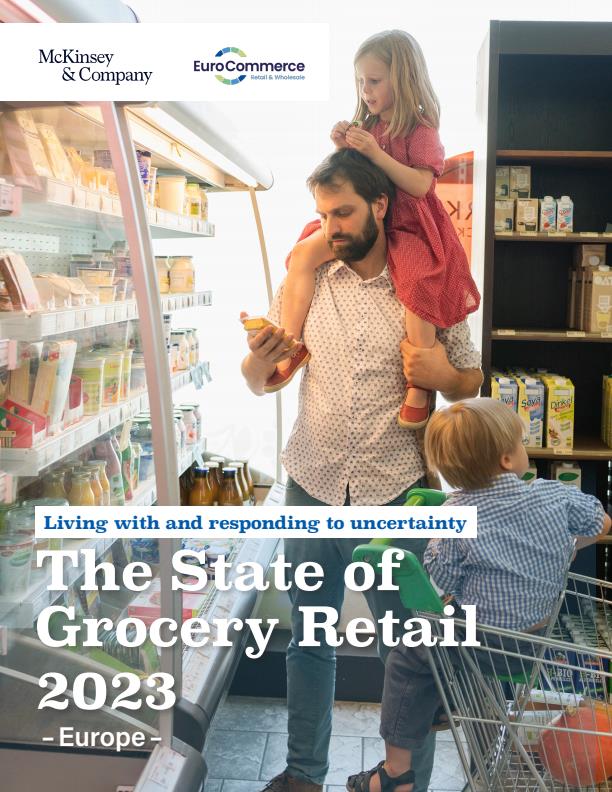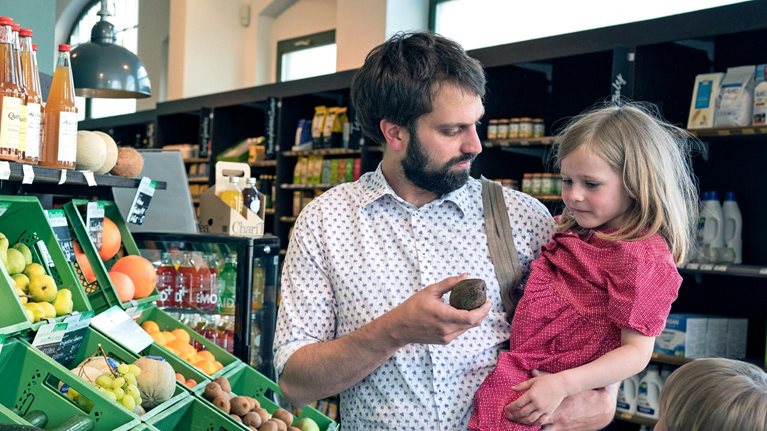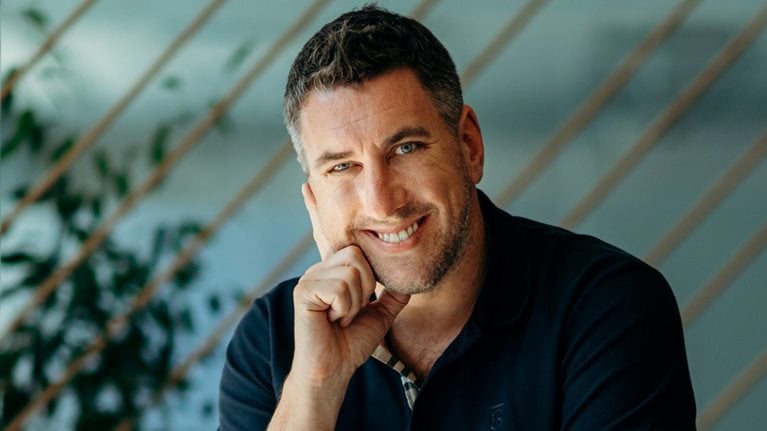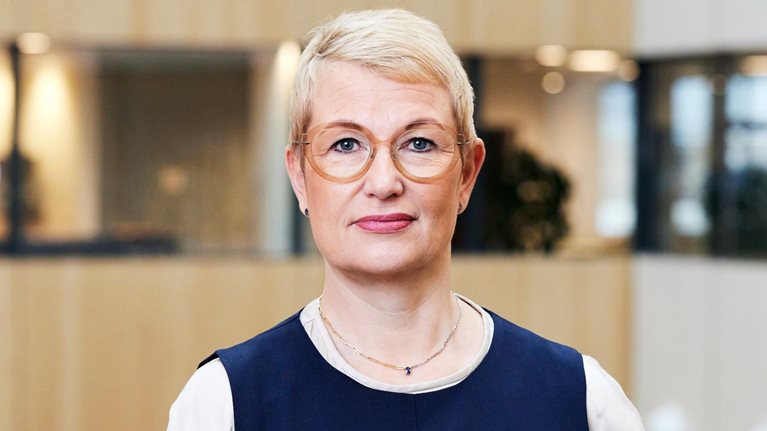McKinsey: What are your expectations for the grocery retail industry in 2023?
Luís Araújo: In 2022, we were dealing with soaring inflation, an overall disruption of the supply chain in Poland, and the impact of the war in Ukraine, our biggest neighbor country. Throughout the first half of 2023, the situation will remain challenging. We still face high levels of inflation and supply chain issues. Consumer confidence will remain negative, and private consumption will stagnate at best.
The second half of 2023 will be different. We expect decreasing levels of inflation and a consistent recovery of the supply chain, which will allow for the progressive growth of volumes. In addition, we expect a progressive decline of fuel, electricity, and gas prices. At the same time, growing salaries will offset at least part of the negative impact of inflation on consumption. Currently, there are no signs of a recession. That said, we expect increasing levels of competitiveness in our market. All players will fight for volume and sales growth to neutralize the cost increases driven by inflation in 2022.
McKinsey: What do you think will be the most important trends in the next three years?
Biedronka is relatively new to e–commerce, but we are determined to turn our late arrival on the scene into a source of differentiation, especially with respect to sustainability, which is in itself an important trend.
Luís Araújo: Digitalization is the most important megatrend. One aspect of that is e–commerce, especially quick commerce. During the pandemic, a growing customer segment discovered the convenience of shopping online. Biedronka is relatively new to e–commerce, but we are determined to turn our late arrival on the scene into a source of differentiation, especially with respect to sustainability, which is in itself an important trend. For example, we try to put as many of our couriers on bikes, rather than in trucks, and have them deliver orders in the proximity of our stores. We are also exploring delivering to delivery boxes, rather than to the homes of customers, to keep routes short and curb fuel consumption. Generally, we aspire to design all e–grocery systems with sustainability in mind.
McKinsey: Do you think digitalization will change the game beyond e–commerce?
Luís Araújo: Absolutely. Advances in analytics, artificial intelligence, and automation will help make our business more efficient. And as digital natives grow up, we will also see a progressive shift of communication from traditional to digital media, including social platforms such as TikTok and Instagram. We live in a society in which different groups of people align their behavior and follow those that are perceived as trendsetters in their respective peer groups. Going forward, we believe that influencers will play an important role in marketing, and we see this development as an opportunity to promote our brand promise and our value proposition in a new way that will resonate with younger customers.
McKinsey: You mentioned sustainability as an important trend in its own right. How does this trend affect the way Biedronka does business?
Luís Araújo: There is a growing preference among consumers for healthier and fresher food as well as for local production and distribution. In the future, consumers will pay more attention to the origin of products and the transparency of the supply chain. Fruit and vegetables constitute an important sales category for us, and we aspire to increase local sourcing in this area, leveraging the fact that Poland is an agricultural country. Generally, sustainability is one of the top criteria we use when it comes to selecting and giving incentives to suppliers. For example, we reward suppliers that reduce their carbon footprints with higher sourcing volumes.
Additionally, our logistics system is designed to minimize the distance from distribution centers to stores and to maximize the number of stores served by each distribution center. We also have a program to reduce energy consumption and promote green energy all along our supply chain. Finally, we invest in eco–packaging, and we lead the market regarding the incorporation of environmentally friendly solutions in our brands and products. In the future, we will also take the lead on increasing the share of electric vehicles in the fleets we use.
McKinsey: What does it take for a grocer to leverage opportunities around technology and sustainability?
Luís Araújo: The most important prerequisite is to have the right people. This includes both experienced workers and young talent with the skills that are needed to incorporate software and other analytical tools into the way grocers do business. As the European population ages, labor shortages will increase, and we will have to make sure we are well equipped to compete for the talent, knowledge, and skills we need to succeed, both at the level of individual companies and as a sector.
More broadly, every grocer needs a vision that is aligned not only with technological evolution but also with the continuous evolution of the value proposition. Because change is expected to accelerate on several fronts, retailers will need agility to anticipate new opportunities and adapt their practices accordingly.
McKinsey: What do you see as the driving forces of Biedronka’s continuing success?
Luís Araújo: First and foremost, it’s the quality of our labor force. Many of our leaders and managers have been with us for more than 20 years. They are fully aligned with the company vision, and they are connected by a set of strong, shared values. The core of our value set is our discount mindset. All our decisions are driven by our goal to transfer as much value as possible to our customers. Efficiency, productivity, and cost minimization jointly form the backbone of a system that delivers the lowest cost possible and enables us to offer the lowest prices in the market.
The core of our value set is our discount mindset. All our decisions are driven by our goal to transfer as much value as possible to our customers.
McKinsey: In the first three quarters of 2022, your sales grew substantially compared with 2021. What were the predominant drivers of this growth?
Luís Araújo: Before the war in Ukraine, basket size was the most important growth driver. When the war began, traffic became the dominant growth driver. When inflation peaked in the third quarter of 2022, consumption and basket size started to deteriorate. Since then, traffic has been the principal driver of growth.
McKinsey: How much of the volume uptake was driven by customers trading down?
Luís Araújo: Downtrading is only a minor factor. We are gaining market share because consumers appreciate our promise to offer the lowest prices in the market, no matter how difficult the circumstances may be. We have the best price perception in Poland by far. The positive effect of this positioning predates the recent crisis. Even if the competition gets stronger, we are confident that customers will stick with Biedronka. Our commitment to efficiency and productivity enables us to protect consumers from price increases more effectively than the market on average. In the early days of the inflation surge, we even implemented an “anti–inflation shield” with a strong commitment to refrain from increasing the prices of the most frequently bought products in the first half of 2022.
McKinsey: That sounds like quite an investment. What was Biedronka’s strategy to address cost pressure in 2022?
The best strategy to deal with cost pressure is to fight for market share gains and volume growth to help to dilute costs. This is the core of our strategy, and we will keep doing it.
Luís Araújo: We accelerated our technological transformation to increase productivity and decrease costs. One example is our investment in renewable energy. We aim to equip more than 2,000 of our stores with solar panels. This is expected to bring energy costs down by about 15 percent, and it will also help to reduce the emission of greenhouse gases.
At the same time, we keep investing in supply chain optimization. Most recently, we opened a new distribution center that helps reduce transportation costs. But the best strategy to deal with cost pressure is to fight for market share gains and volume growth to help dilute costs. This is the core of our strategy, and we will keep doing it.



